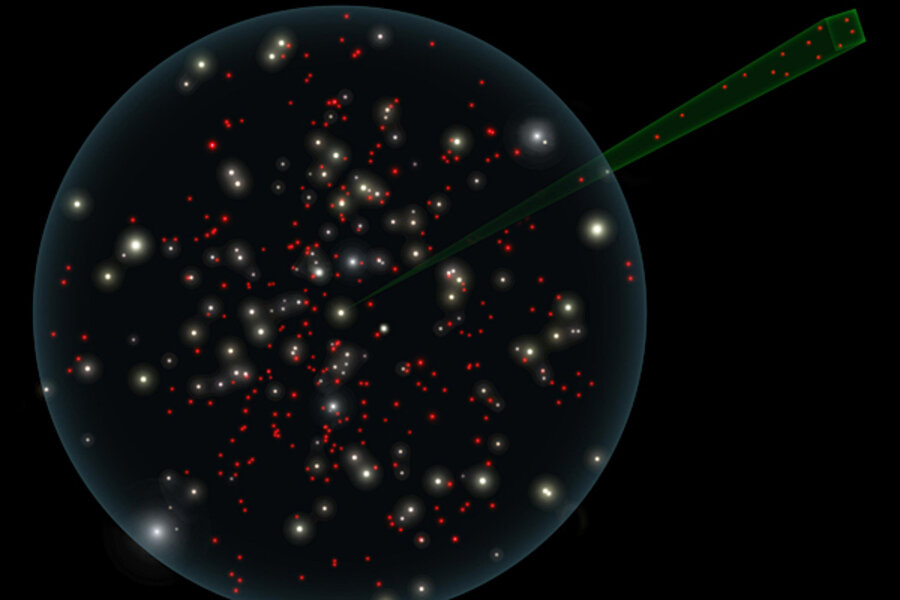Astronomers find a bunch of loser stars that could barely cook a pizza
Loading...
Astronomers have discovered what appear to be the coldest failed stars yet found in the universe – but they're a group of stellar misfits, according to a new study.
Scientists located the 14 cosmic oddities, called brown dwarfs, using NASA's Spitzer Space Telescope. These stars are so cold and faint that they would be impossible to see with visible-light telescopes, but Spitzer's infrared camera eye was able to detect their feeble glow, NASA officials said in a Thursday announcement.
The brown dwarfs are located hundreds of light-years from Earth – too far away and faint for ground-based telescopes to see and confirm, using a method called spectroscopy. Only a handful of the cosmic oddballs have been previously discovered.
The temperatures of the newly-discovered failed stars range from 350 to 620 degrees Fahrenheit (177 to 327 degrees Celsius), which may seem hot, but for a star is actually bitter cold. In fact, those temperatures are comparable, in some cases, to planets that orbit other stars, researchers said.
Our sun, for comparison, averages a temperature of about 10,000 degrees F (5,500 degrees C), NASA has said.
The research is detailed in the Astronomical Journal.
Hunting brown dwarfs
While brown dwarfs have been hard to find in the past, but should soon be coming out of the dark in droves, NASA scientists said.
NASA's Wide-field Infrared Survey Explorer (WISE) space observatory, which is currently scanning the entire sky in infrared wavelengths, is expected to turn up hundreds of similar cold objects, if not even colder. [WISE telescope's first photos]
"WISE is looking everywhere, so the coolest brown dwarfs are going to pop up all around us," said Peter Eisenhardt, the WISE project scientist at NASA's Jet Propulsion Laboratory (JPL) in Pasadena, Calif., and lead author of Spitzer telescope study. "We might even find a cool brown dwarf that is closer to us than Proxima Centauri, the closest known star."
WISE is searching a volume of space that is 40 times larger than that sampled in the recent Spitzer study, which only concentrated on a region in the cosmos in the constellation Bootes. The Spitzer mission is designed to stare at targeted patches of the sky in great detail, whereas WISE is charged with inspecting the whole sky.
Truth about brown dwarfs
Brown dwarfs, like stars, form from collapsing balls of gas and dust, except they are much smaller in comparison, never collecting enough mass to trigger nuclear fusion and shine with starlight.
The smallest known brown dwarfs are about five to 10 times the mass of Jupiter – which is as massive as some known gas giant planets around other stars. Brown dwarfs start out with some internal heat left behind from their formation, but as they age, they cool down. The first confirmed brown dwarf was announced in 1995.
"Brown dwarfs are like planets in some ways but they are in isolation," said astronomer Daniel Stern, co-author of the Spitzer paper at JPL. "This makes them exciting for astronomers – they are the perfect laboratories to study bodies with planetary masses."
Most of Spitzer's newly-discovered brown dwarfs are thought to be part of the coolest known class of brown dwarfs, called T dwarfs, which are approximately less than 2,240 degrees Fahrenheit (1,220 degrees Celsius).
One of the objects appears to be so cold that astronomers think it may even be an elusive Y dwarf – a proposed class of even colder stars. The T and Y classes are part of a larger system that categorizes stars; for example, the hottest, most massive stars are O stars; our sun is a G star.
"Models indicate that there may be an entirely new class of stars out there, the Y dwarfs, that we haven't found yet," said Davy Kirkpatrick, a co-author of the study and a member of the WISE science team at the California Institute of Technology in Pasadena, Calif. "If these elusive objects do exist, WISE will find them."
The search for Nemesis
Kirkpatrick is considered an expert on brown dwarfs, and himself came up with the L, T and Y classifications for the cooler stars.
He believes that it is possible for WISE to detect an icy, Neptune-sized or bigger object in the far reaches of our own solar system – thousands of times farther from the sun than Earth. Yet, there is some speculation among scientists that such a cold body, if it even exists, could be a brown dwarf companion to our sun.
Researchers have nicknamed this hypothetical object "Nemesis."
"We are now calling the hypothetical brown dwarf Tyche instead, after the benevolent counterpart to Nemesis," Kirkpatrick said. "Although there is only limited evidence to suggest a large body in a wide, stable orbit around the sun, WISE should be able to find it, or rule it out altogether."
The existence of the brown dwarfs found by Spitzer implies that there could be a hundred or more similar objects within only 25 light-years of our sun. And, since WISE casts its eyes everywhere, it is likely that the space telescope will find these missing orbs, which will be close enough to confirm with spectroscopy.
In fact, it is possible that WISE will even find more brown dwarfs within 25 light-years of the sun than the number of stars known to exist in this area of space.
"WISE is going to transform our view of the solar neighborhood," Eisenhardt said. "We'll be studying these new neighbors in minute detail – they may contain the nearest planetary system to our own."





